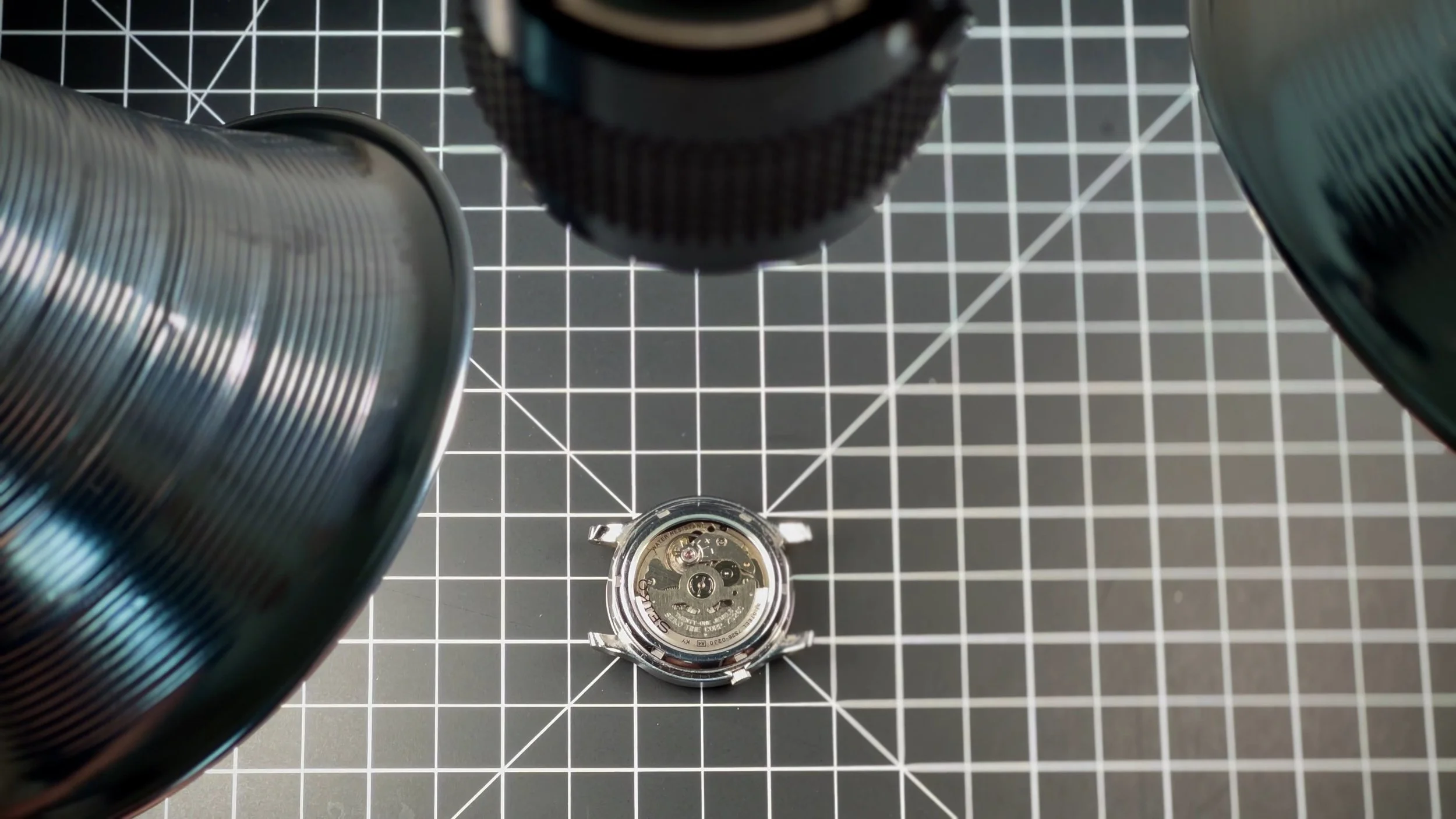Tiny Motions with Tough Lighting
Inspecting wristwatch movements with the Ubicept solution
As a technology startup, we’re naturally captivated by all things digital. But you know what? There’s something about the precision manufacturing of mechanical watches that still blows our minds. So, we decided to see how well our solution could capture their movements!
First of all, let’s talk about scale. This is about the closest we could focus with a standard smartphone camera:
See that circular thing at the top with the purplish dot at the center? That’s the balance wheel which functions like a pendulum on a larger clock.
To observe the wheel (and the mainspring that drives it) we needed optics that could focus significantly closer than the smartphone camera. We chose a macro setup that was able to achieve 1:1 magnification on the sensor.
Now, let’s talk about this “tough lighting” that we mentioned in the title. We used two 60 watt (equivalent) LED bulbs from about a foot away:
You may be thinking: how on earth is this “tough lighting?” It seems incredibly bright! Well, there are two main challenges here:
First, conventional cameras need extremely short exposures (about 200-300 microseconds) for each frame of video to freeze the motion of the movement.
Second, getting sufficient depth-of-field was really hard. You know how, with a standard camera, it’s hard to get the foreground and background in focus at the same time when you’re trying to capture something up close? It’s even more challenging at the macro scale. We had to stop down the lens almost all the way to keep everything in focus, which severely limited the amount of light reaching the sensor.
To give you a sense of these challenges, here’s a still frame from the conventional machine vision camera that we used for the comparison:
For context, this is from a 4K sensor pixel-binned down to 960x540. Even so, there's a fair amount of noise present, which shows that was struggling to deliver clear images at this light level. We could have increased the exposure time, of course, but this would have resulted in an unacceptable amount of motion blur.
Alright, without further ado, let's see the results of our experiment:
Our solution can capture not only the large-scale movement of the balance wheel, but also the secondary vibration of the spring itself, thanks to the significantly higher frame rate (3600 fps vs. 100 fps). With the conventional machine vision camera, all of this detail is lost.
What about dedicated high-speed cameras? Well, we're saving that discussion for another demo, but let's just say for now that they tend to require even more light.
Want to see how our solution performs on your machine vision problem? We'd love to help! Reach out to us today through our contact form or inquire directly about an evaluation kit.



